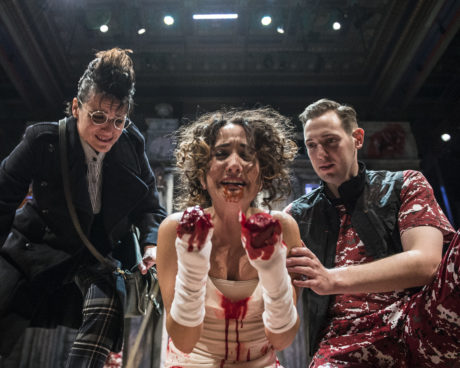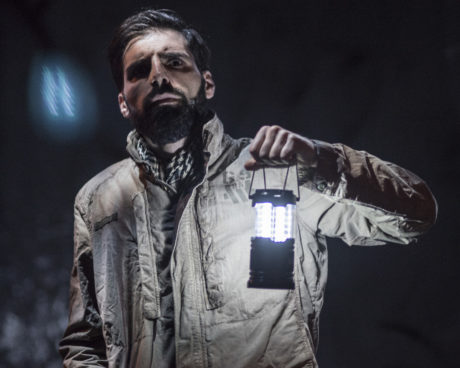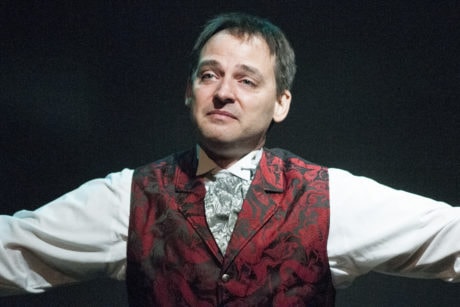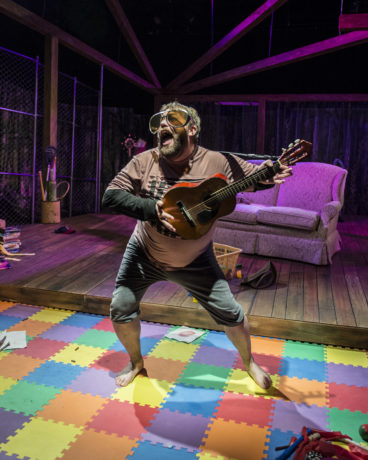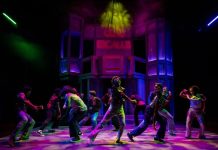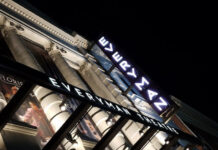Often, images of a theatrical production help establish the initial interest and expectations for a potential audience. Photographs can draw an audience into a production even before reviews or word-of-mouth. Pictures can capture the essence of a production or of a particular stage character.
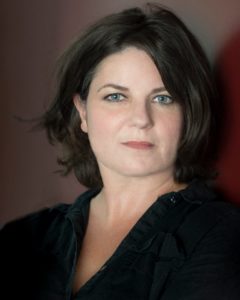
A theater photographer is responsible for creating a production’s visual record. The best theater photographers aim for emotion in their work. And to tell a visual story without a word spoken. This is way beyond mere snap-shorts or flat emotion-free images.
In the DC area, Teresa Castracane is one of the go-to photographers for a number of theater companies. Wanting to learn more about Teresa and her photographic work, I decided that an interview was in order.
So, let’s get right to the good parts; the interview with Teresa Castracane. And please enjoy the pictures, all taken by Teresa, of recent DC area productions.
David Siegel: How did you become a theater photographer?
Teresa Castracane: In my first (and continuing) career, I’m an actor. At some point during the search for the supplemental work that would keep me happy, I turned my love of photography into a business. I started with actor headshots, and soon after, production photography. It was a natural direction for me to go in, and one which has dovetailed well with my acting work.
Do you read the script before deciding what shots to take? If so, why?
As a theatre artist, I’m often familiar with the scripts of the shows I’m shooting. But if I’m not, I do not read the script ahead of time. Part of my job is to capture the story as its being told at this moment in time, by this particular group of artists. I usually get all the information I need by giving my full attention to the work in front of me,
David: Why are theater photographs important to marketing a particular production?
Theatergoers attend a play in the hope of having an emotional reaction to it. If an image of mine can create an emotional response, then the viewer has an impetus to go find out what’s happening on stage.
What makes a theater photograph emotionally memorable?
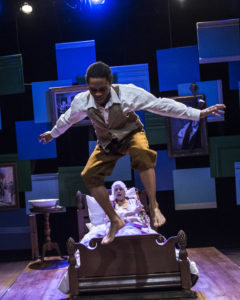
What I look for as I’m shooting, and as I’m culling the best images afterward, is the moment of fullest emotional expression. So, in the same way that, if you’re photographing a ballet dancer doing a grand jete, the shot you want is the one where her body reaches its fullest height, and its fullest extension, the shot I want of an actor at work is the one where her body reaches its fullest emotional expression. For an individual shot, this might have a good bit to do with facial expression. If there is more than one actor in the shot, I’m looking for the fullest expression of the moment, of the event. This will have more to do with body language, and actors’ physical relationship to one another on the stage. Sometimes, set, light, or costumes will contribute to the feeling of that moment, and then you’ve really got something. I believe this applies to any genre, any emotion. There’s an arc upwards to the fullest expression – of joy, of grief, of ridiculousness, of rage – and then a release, a transition into the next moment.
David: Do you shoot during a final dress rehearsal, an actual production or by blocking a shot?
I normally shoot during a dress rehearsal. I prefer this to shooting during a performance when my movements are restricted because I’m trying not to annoy the audience.
David: What are some of the challenges shooting photography for theater?
Running around in a dark space while holding a black box in front of my eyes is definitely up there. Photographically speaking, the low light is challenging. But digital cameras become more capable every year, which is a great help.
I find the wide shots slightly more challenging because there are more elements that need to come together to make the image work. If you’re about to catch a dramatic moment, but actor #1 is blinking, or actor #2’s fly is down, or actor #3’s body language is simply not contributing to the moment being documented, you may have lost your shot.
Does it make a difference if you shoot is in color or Black & White?
I deliver all my production photos in color, as that’s the standard these days. But I’ll never not love black & white. A black & white image can feel more nostalgic, and more iconic than one in color.
David: Why do you enjoy being a theater photographer?
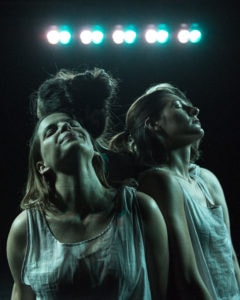
When I’m photographing a show, I employ the same emotional intuition that I use when I’m performing– there’s a heightened awareness of one’s fellow actors, and their emotional states. I know when to take the shot because I’m responding emotionally to the play – in much the same way, one hopes, that the audience will, once they arrive. I love letting my intuition take over from my reason for a short while, and I love the feeling of connection to the actors. It sustained me during the break I took from performing after my children were born.
What aspects of being a theater photographers do you think that theater-goers would be surprised to learn?
Possibly the fact that I might shoot, say, a thousand frames, but deliver only two hundred or so to the client. There’s definitely a process of elimination involved.
One last question. What play/comedy/musical would you like to shoot in the future?
A particular play doesn’t immediately come to mind, but I would love to find a situation where I can actually be on stage, photographing from among the actors, perhaps from each character’s point of view, to produce some really dynamic and intimate images. There would need to be real trust between the actors and me, and I would need to know the staging as well as they do. I’m not sure how useful it would be from a marketing standpoint, but the idea fascinates me. Maybe it’ll be my next fine art project.
Please enjoy some of Teresa’s other recent photos from DC area productions:


